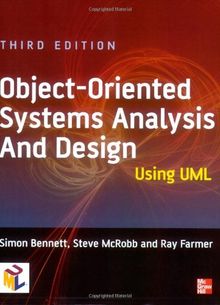
The book provides a clear, practical framework for development that uses all the major techniques from UML 2.0. It follows an iterative and incremental approach based on the industry-standard Unified Process. It places systems analysis and design in the context of the whole systems lifecycle, and includes generic analysis and design issues. Two realistic case studies are used throughout the book - one for illustrative examples and the other for practical exercises for the reader. The book is structured in four parts, which can be flexibly combined to meet the needs of the syllabus. The first part provides the background to information systems analysis and design and to object-orientation. The second begins with two case study chapters, and focuses on the activities of requirements gathering and systems analysis, and the basic notation of the Unified Modelling Language (UML). The third part covers the activities of system design and UML notation for object design. The final part examines the later stages of the systems development lifecycle, reuse and software development methodologies.